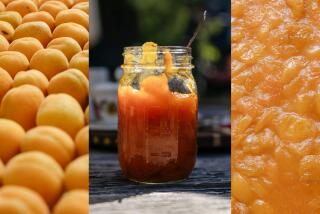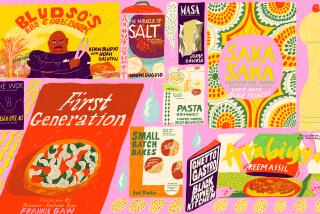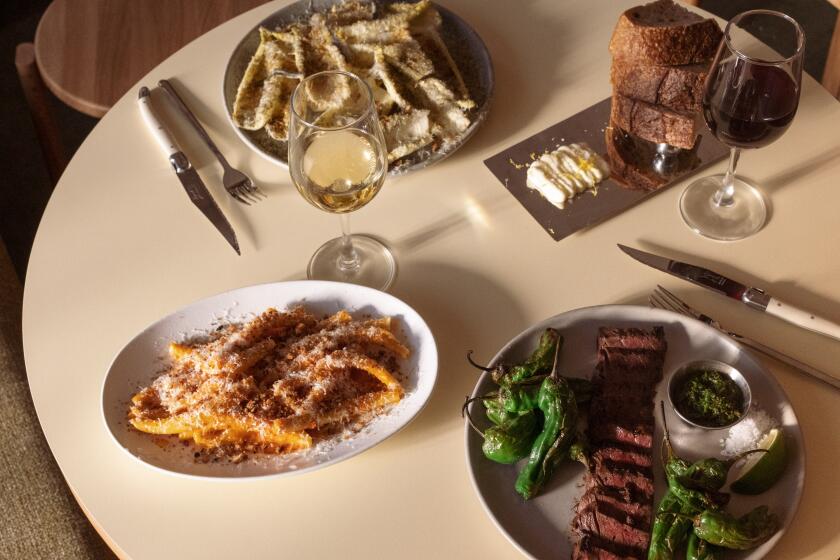âSaving the Seasonâ is a great new canning book
I have, at various times in my cooking life, been a compulsive canner. It probably goes hand in hand with that whole farmers market thing â you spend enough time walking down rows of beautiful fruit and almost inevitably thoughts will turn to jams and jellies, pickles and preserves.
Despite my best intentions, the path from market stand to bottled perfection did not run straight and true. Instead, it was long and slow, potholed by watery strawberry jam and overcooked cherry preserves.
I wish I had had Kevin Westâs new cookbook âSaving the Seasonâ back then. But if I had to wait for something like this, so be it. The book is as pleasurable (and useful) for the somewhat experienced canner as it is for the novice.
West is a Southern California transplant. Raised in the South, he came to Los Angeles to work as the West Coast editor of W magazine, a fashion bible. Inspired by the wealth of produce he found around him, he began to experiment with preserving, and documented it in his blog Saving the Season.
Heâs got a good cookâs curiosity, always wondering why things work the way they do and constantly on the lookout for new ideas. His recipes range from the basic, such as a strawberry jam annotated with detailed notes to help the rankest beginner along, to the fairly exotic, such as pickled purslane.
Happily, West is a small-batch kind of guy â he rarely calls for more than three pounds of any fruit or vegetable, so if an experiment goes awry (as preserving experiments will, especially in the early stages), the damage isnât too severe.
Not that thatâs so much of a concern. Westâs instructions are clear and precise and his explanations of what is going on are thorough. If youâve ever had trouble judging the precise moment when a hot jam is set, he describes the oft-prescribed cold-saucer test, but then elaborates:
âIf youâre still unsure of whether you have a gel set, take the preserving pan off the heat and stir it for 60 seconds. As it cools slightly, study it: Does it stick to the edges of the pan? Can you draw a line in the bottom of the pan with your spoon? Does it mound in a spoon? Does the hot product look like jam? If so, you probably have a gel set. Or, on the other hand: Is there still excess liquid âin the cornersâ of the pan â that is, around the edges? Does the hot mixture splash rather than slosh if you slap it against the edge of the pan? Does the liquid dribble quickly off the edge of a spoon? Does the hot mixture look like cooked fruit in thickened syrup? Does the liquid look shiny, like water, rather than lustrous, like jam? If so, you probably do not yet have a gel set.â
Aside from the bookâs instructive aspects, itâs also a pleasure to read. West includes short profiles of his favorite farmers and farm adventures, from Santa Monica market heroes such as Windrose Farmsâ Bill and Barbara Spencer, to a weekend-long ramp dig in West Virginia. He cherry-picks apt quotes from Virgil, Thomas Mann and Edna Lewis. Heâs even selected and analyzed a handful of his favorite fruit and vegetable paintings, by Nicolas Poussin, Luis Melendez and others.
Itâs been a couple of years since I last made jam â my wife sensibly decreed that I couldnât make any more until weâd eaten what I already had in the pantry. But just leafing through the book, I found myself thinking âHmmm, Iâve got all those strawberries in the refrigerator, and then thereâs the peaches ripening on the counter. Surely she wonât notice another jar or two ⌠â
ALSO:
Want your red wine to taste its best?
âBarbecue Crossroadsâ: To really understand Q
More to Read
Eat your way across L.A.
Get our weekly Tasting Notes newsletter for reviews, news and more.
You may occasionally receive promotional content from the Los Angeles Times.











